AHA and BHA acids have a complex regenerating, anti-inflammatory, comedolytic and pigment-constricting effect. They regulate the functioning of the sebaceous glands, even out the tone and texture of the face. Peeling for problem skin plays an important role in complex acne therapy. The principle of peeling is simple: the drug dissolves horny scales, removes dead cells, and the regeneration process in the dermis is activated. Cells divide at an accelerated rate, the skin is restored with new, young cells. As a result, the skin looks smoother, younger, brighter, healthier.
Characteristics of oily and problem skin
Those with oily skin are more likely than others to face the problem of acne and acne. Excess sebum in the pores is a favorable environment for Propionibacterium acnes bacteria. As they multiply, they provoke an inflammatory process, and acne forms.
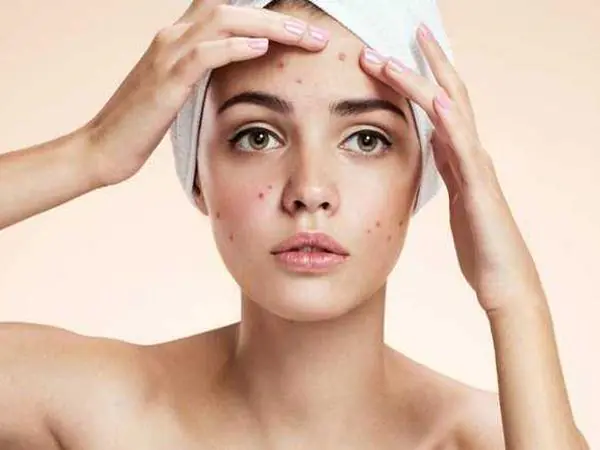
Acne dermatosis is a complex polymorphic, multifactorial disease of the sebaceous glands. Today, only the hormonal theory of acne development has been proven.
Mechanism of acne formation:
- Receptors in the dermis react to excess testosterone synthesis and encourage the sebaceous glands to produce sebum.
- If the keratinization process proceeds normally, then excess sebum simply comes out to the surface of the epidermis.
- If the stratum corneum is not regularly exfoliated, then the remaining fat gets stuck in the pores, mixing with dying corneocytes, forming sebaceous plugs or comedones.
- The blocked ducts of the sebaceous glands colonize bacteria, causing inflammation and the formation of a purulent element.
The main cause of acne is endocrine pathology - hyperandrogyny. But modern medical science does not operate with effective methods for correcting hormonal imbalance (only oral contraceptives and diet). That's why The most expressive effect is provided by external treatment aimed at speeding up exfoliation.
Peels prevent clogging of pores, free the ducts of the sebaceous glands from excess corneocytes and dissolve existing comedones. Acids also provide an antibacterial and disinfecting effect, even out skin tone and texture by removing a layer of old cells.
Which peels are suitable for acne skin?
If there are inflammatory elements on the skin and the integrity of the epithelium is compromised, then phenol, pure milk and glycolic peels are contraindicated. Other types of procedures can be performed with caution.
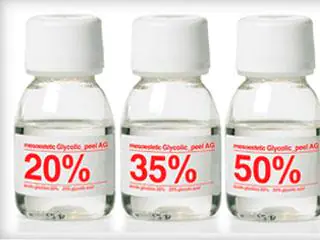
Glycolic acid is used carefully to treat acne. It has a small molecular weight, so it penetrates into the deep layers of the dermis.
In this case, not only dead cells of the stratum corneum are destroyed, but also healthy epidermis. In damaged areas, the risk of inflammation increases.
Therefore, acne often worsens after glycolic acid.
Important! To prevent this, it is recommended to use glycolic acid only in combination with other AHAs or use antibiotic creams in post-peel care.
Price: 600–2000 rubles per procedure.
Often used for problem skin, as mandelic acid has a pronounced anti-inflammatory and disinfectant effect. It is similar in action to the antibiotic Erythromycin, but does not cause resistance in bacteria and acts against all microorganisms (both viruses and fungi too).
Mandelic acid can be applied even to active inflammations.
Price: 2000–5000 rubles per procedure.
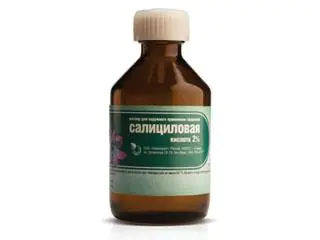
Salicylic acid (BHA) is a strong keratolytic; it penetrates pores better than others and dissolves sebaceous plugs. To improve product penetration and reduce discomfort during the procedure, BHA is used in combination with other acids.
Price: 1500–4000 rubles per procedure.
Salicylic acid is a common ingredient in cosmetics for skin with acne and enlarged pores. Manufacturers actively include it in skin care and even decorative cosmetic products. A toner with BHA has a pigment-constricting effect, disinfects the skin and evens out the Ph balance after washing.
Foundation with Salicylic acid also helps to isolate inflammatory elements and dry them out. Popular tones with salicylic acid: Dermablend 3D SPF 25 from Vichy, Anti-Blemish Solutions Makeup from Clinique.
A combination drug is used (salicylic acid + lactic acid + resorcinol). This peeling can also be performed for active inflammation. It dries out pimples well, dissolves comedones and exfoliates dead cells.
Jessner's peel can be superficial or medium. The depth of impact depends on the number of layers.
The cosmetologist applies the mixture of acids, and the client washes it off independently after 8–15 hours.
Price: 3500–8000 rub.. for the procedure.
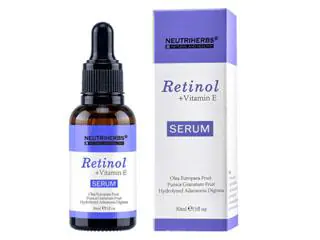
The procedure is carried out using retinoic acid (tretinoin). This is the active form of vitamin A. The procedure is the same as for Jessner.
“Yellow” peeling gives a pronounced result, smoothes the relief, speeds up healing, prevents the appearance of new comedones, narrows pores, and helps even with deep cystic acne.
Attention! “Yellow” peeling can cause aggravation after the procedure, so the cosmetologist prescribes maintenance therapy with tretinoin or antibiotics.
Price: 6500–15000 rub. for the procedure.
Tretinoin in dermatology is the “gold standard” for the treatment of acne. It can be used not in peeling courses, but in daily care. Preparations with tretinoin:
- Retin A (original drug, everything else is generic);
- Renova;
- Acnelyse;
- Retino-A;
- Stieva-A;
- Airol;
- Locacid.
Tretinoin is not certified in the Russian Federation, therefore, only drugs with adapalene (retinoic acid derivative) can be purchased in retail pharmacy chains: Differin, Bezugrey, Adolen, Effezel.
Trichloroacetic acid (TCA) is used primarily locally. It is contraindicated to apply to active inflammations. This drug is chosen for severe textural problems, post-acne, and scars. TCA peeling is classified as medium peeling. The rehabilitation period is 1–2 weeks.
Price: 3000–15000 rubles per procedure
For what problems should peeling be used?

Problematic skin can be treated by adjusting your daily care routine to include products with acids or pharmaceutical preparations with tretinoin/adapalene. Peels are used to speed up the results.
But There are problems that can only be solved with the help of peelings:
- blue spots after acne;
- scars, scars after large papules;
- deep, painful cysts, conglobate acne, boils.
Important! Acids affect different stages of acne formation. They accelerate skin renewal and prevent the formation of comedones, dissolve sebaceous plugs and suppress the proliferation of pathogenic microorganisms.
What effect can be achieved after the procedure?
On oily skin, acne often recurs. It is impossible to completely get rid of the problem without adjusting your lifestyle, diet and skin care. With the help of peelings you can achieve quick results. And to consolidate success, you need to include products with acids in your home care.
Salicylic, TCA, “yellow” and Jessner peels have a pronounced effect of drying out inflammation, reducing sebum production, and narrowing pores. They are preferable for oily skin.
After rehabilitation, the skin looks matte, smooth, small wrinkles and traces of healed inflammation are smoothed out.
For dry skin with inflammation, glycolic, almond, milk, and pyruvic are more suitable. They speed up renewal and healing, even out the tone. Also, acids free the ducts of the sebaceous glands, sebum freely comes out and performs its direct and natural function - moisturizes the epidermis.
Peeling at home
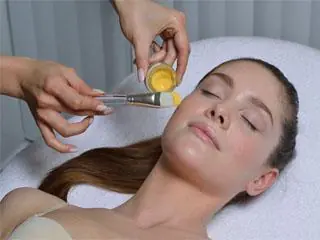
Problem skin does not always react unambiguously to acids. Even some novice cosmetologists are wary of clients with rashes due to the unpredictability of the result.
It is possible to exfoliate acne at home, but you must observe some nuances:
- buy a certified product from a reputable manufacturer and strictly follow the protocol for application, exposure, and neutralization;
- do skin tests for intolerance to the active substance;
- First, carry out the procedure on a small area (for example, only the forehead);
- You can consult a specialist and conduct the first session in the salon, and complete the course at home.
There are many products for home exfoliation on the market - almost every reputable beauty brand produces a line with acids.
Products for home use are sold in cosmetology stores. The advantages of such products: reasonable price, convenient format, clear protocols for use. Plus, each company immediately offers neutralizers, SPF creams, skin preparation and post-peeling care products for the drug.
Top home remedies for peeling
Here are the most effective medications for problem skin: which can be purchased for less than 1,500 rubles:
- Gel with chitosan, based on glycolic acid 10% from MEDICAL COLLAGENE 3D (Russia). Price 700 rub./30 ml.
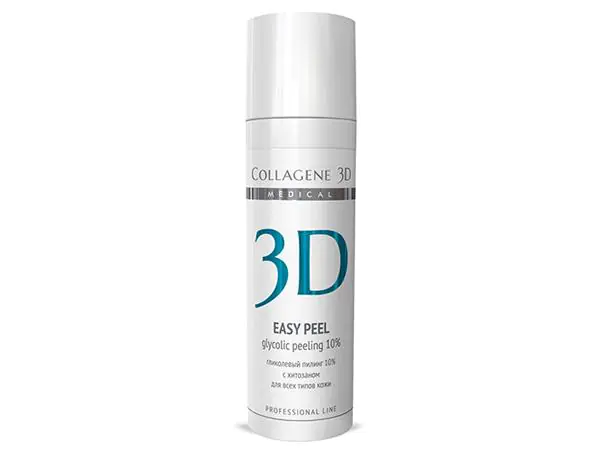
- Peeling with mandelic acid 5% from ALPIKA (Russia). Price 1500 rub./30 ml.
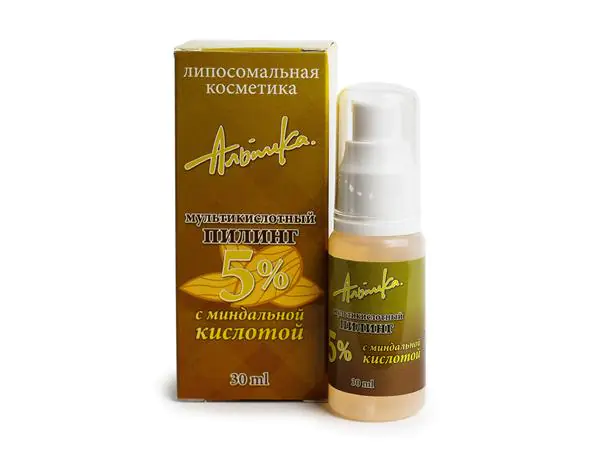
- AXA 8% / Homework from PREMIUM (Russia). Acids in the composition: glycolic, malic, citric, lactic. Price 900 rub./100 ml.
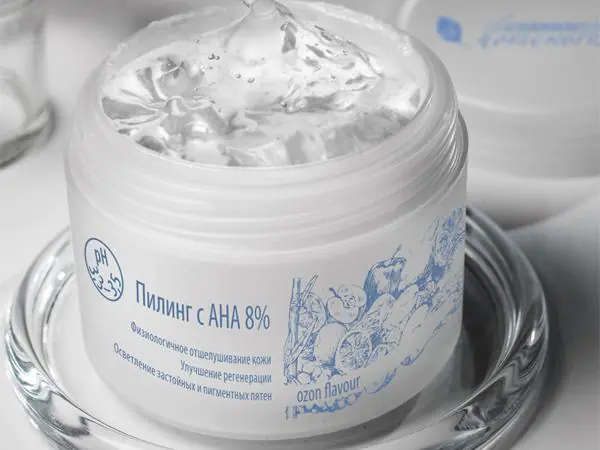
- Raspberry peeling for oily skin from New Line. Acids in the composition: glycolic (20%), lactic (5%), salicylic. Price 800 rub. for 100 ml.

- Salicylic, retinol, milk, Jessner peels from Home-Peel (Ukraine). The average price is 1500 rubles. for 10 ml.
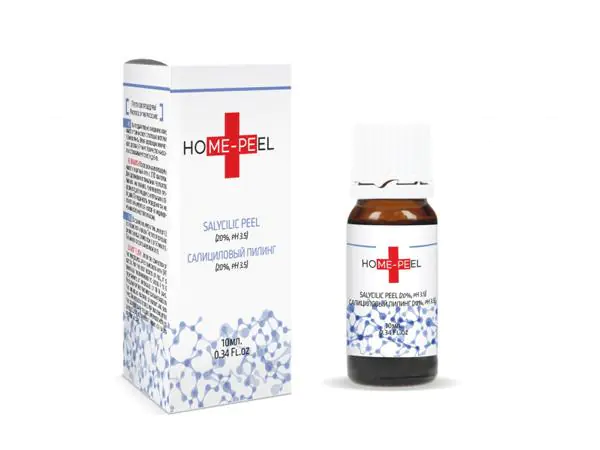
Also, many products with acids are produced by Korean brands. Korea in the beauty world is perceived as “New France”. Today, almost all innovations come to the market from the South Caucasus.
Acid pads are packages of cotton pads soaked in an acid-containing product. The application procedure is the same as with regular peeling, but the release form is convenient and hygienic. They are produced by the following brands: Missha, Scinic, A’PIEU, Cosrx.
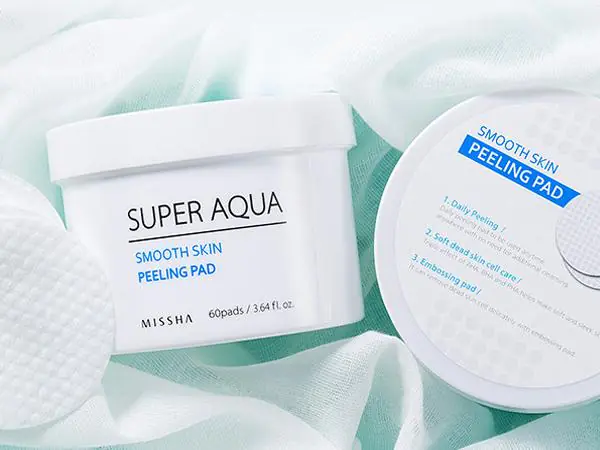
A rolling mask is an excellent alternative to scrubs, which are contraindicated for rashes. because they injure it with abrasive particles and spread the infection to unaffected areas. The roll should be applied in a thin layer to a clean face, wait half a minute and begin to “roll” the mask over the skin. The mask capsules are removed along with dead skin particles. You can use a rolling pad to remove peeling after regular peeling. But this is an optional remedy; it will not help get rid of acne. Rolling masks are produced by the following brands: Secret Key, Ekel, Mizon, Shelim, Tony Moly.
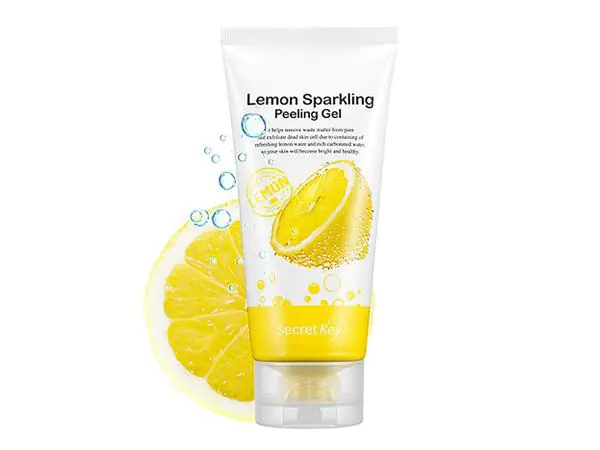
Photos before and after
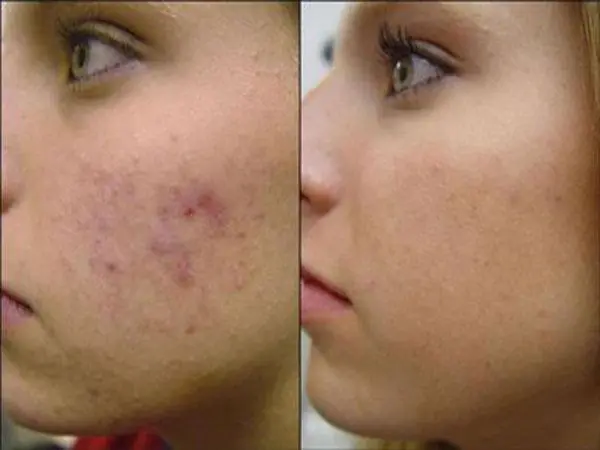

Skin care rules after exfoliation
As practice shows, 85% of unpleasant consequences after peeling on problem skin occur due to improper rehabilitation care.
For problem skin, it is always necessary to select creams and serums marked non-comedogenic (do not clog pores). But not all manufacturers care about labeling their products.
Important! Comedogenic components are contraindicated for women with acne, as they can aggravate the situation. Undesirable ingredients: talc, lanolin, alcohol denatured alcohol, oils (castor, cocoa, coconut, wheat germ, peanut, sunflower, soybean), butyl stearate, caprylic acid.
The skin, cleansed, renewed, thinned after peeling, absorbs all care products well. It is important to double-check all household cosmetics to avoid causing acne relapse.
The peeling product itself may contain risky ingredients. The exposure time of the product on the skin is too short for the pores to become clogged.
After glycolic and “yellow” peeling, cosmetologists can prescribe a cream with antibiotics (erythromycin, synthomycin, clindamycin) for an anti-inflammatory effect.
To speed up skin renewal, it is advisable to use ointments or mousses with panthenol, hyaluronic serums, and nourishing creams with safe oils.
You need to choose sun protection products especially carefully, preferably with physical or mineral SPF filters (zinc oxide, titanium dioxide). UV protection is a mandatory step in skin care after peeling.
Precautionary measures

Fruit peels are not recommended for active inflammation. If you have fresh acne, it is better to prefer salicylic, retinoic or Jessner.
All peels are contraindicated during pregnancy and breastfeeding, or during the acute stage of herpes. If you have kidney or liver failure, diabetes, or problems with the thyroid gland, you should consult a specialized doctor before the procedure.
After the procedure, be sure to follow the rules of hygiene: wash your makeup brushes, use disposable towels, wipe your cell phone with alcohol, change your pillowcase to prevent infection on your renewed skin.
Alternatives to contraindicated peels
If acid peels are directly contraindicated, acne can be treated with enzyme peels — with papain, bromelain, quinoa extract. These are gentle procedures that do not provoke photosensitivity.
Medical Collagene has a good selection of enzyme gels (up to 800 rubles).
Another alternative option for exfoliation and acne treatment is azelaic acid. It is not included in peels, but is considered a relatively safe remedy for problem skin. Preparations with azelaine: Skinoren, Azogel, Azik-derm.
Opinion of cosmetologists
Experts recommend chemical peeling as a relatively safe and effective alternative to laser and mechanical cleaning.
This cosmetologist actively promotes peelings for the treatment of acne.

Patient reviews
The forums are full of positive reviews about peelings from owners of problem skin. This is truly one of the few effective acne treatments.


Girls who did not carefully select the drug and type of peeling complained about the lack of the desired effect.

Girls who were not warned about post-procedure care tactics speak negatively about the procedure.

Useful videos
Budget peeling scrub for oily and problematic facial skin at home.
Home peeling is suitable for most people with problematic facial skin. Regular and properly selected exfoliation solves the problem of pimples, acne and painful inflammation in 2-3 sessions. But for oily facial skin, it is necessary to repeat the peeling course at least three times a year. This frequency of salon procedures for some women turns out to be too expensive and leaves a noticeable hole in the budget. At the same time, there are cheap and accessible analogues of professional chemical cleaning, scrubbing and gommage. We will tell you further how to treat problematic skin with improvised means and prepare peeling compositions at home.
Benefits of peeling for problem skin
The problem of so-called teenage skin can bother a woman even after she has crossed the threshold of adolescence. Clogged and inflamed pores, painful pustules, increased secretion of sebum, greasy and loose skin from 18 years smoothly flow into 25, and sometimes 30, creating a lot of psychological complexes for young ladies.
To eliminate progressive defects in problematic skin, some girls use “grandmother’s” herbal decoctions of chamomile or calendula, complex cosmetic lotions and cleansers with salicylic acid, and drying masks based on kaolin or zinc. But cosmetologists agree that amateur and decorative methods of caring for inflammation are significantly inferior to professional peelings for problematic facial skin.
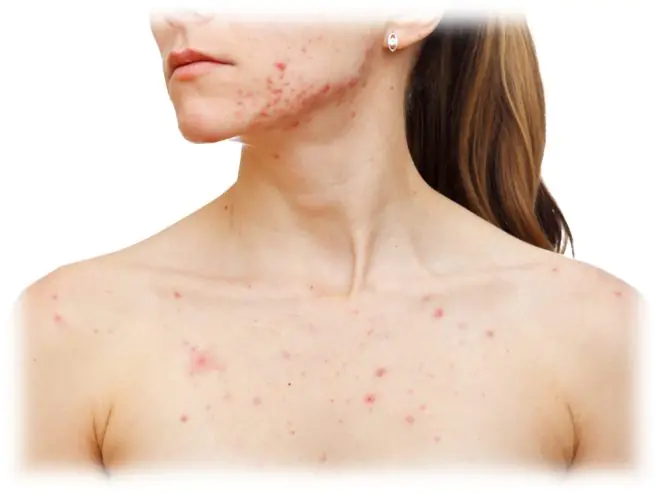
You can prevent the appearance of acne or pimples only if you regularly and thoroughly cleanse the skin of dead particles of the epidermis, residual secretions of the sebaceous glands and ingrown hairs. Impurities invisible to the eye accumulate on the surface of the skin or inside stretched pores. This “microclimate” becomes an ideal breeding ground for the spread of bacteria and the development of subcutaneous parasites. Their waste products, together with dirt, make the complexion dull, causing inflammation and suppuration.
Cosmetic care products provide temporary results. Long-term cleansing is achieved only through chemical or mechanical peelings, which dissolve or polish the keratinized epithelium along with all pathogenic microflora, impurities and defects. Peels help keep the skin clean, treat inflammation and improve its immunity. For problematic facial skin, only proper exfoliation will prevent acne and provide a lasting aesthetic effect.
Oily skin and lack of proper care lead to the formation of comedones, subcutaneous inflammation and pustules of various sizes (acne). Sometimes the rash may appear as small pimples, redness or whiteheads, which may be caused by internal diseases.
Causes of pimples and inflammation
Before choosing a peel to treat problem skin, you need to find out the cause of aesthetic concerns and inflammation. After all, comedones or milia can result from a simple violation of hygiene rules, and boils are most likely to be signs of gastrointestinal ailments or metabolic disorders.
Problematic acne and inflammation on the face can be caused by:
- hyperactivity of the sebaceous glands and excessive secretion of sebum;
- using expired or inappropriate cosmetics, especially powder, foundation or BB cream;
- an abundance of sweet, spicy or pickled dishes and foods in the daily diet;
- violation of hygiene rules (for example, the habit of falling asleep or exercising with makeup on your face);
- allergies to external irritants (for example, pollen, wool, nuts or honey);
- diseases of the gastrointestinal tract;
- the presence of parasites in the liver;
- disturbances of normal metabolism;
- demodicosis - infection with a subcutaneous mite;
- hormonal imbalance, especially on the eve or immediately after menstruation.
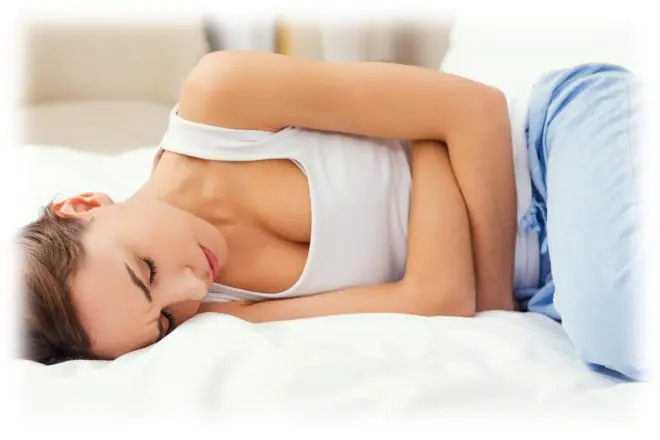
Some causes of inflammation and skin rashes are temporary. In order to get rid of their consequences, sometimes it is enough to change your habits or, conversely, accustom yourself to regularly performing special peelings. If imperfections in appearance become symptoms of serious diseases or allergies, there will be few peeling procedures, and the problem will have to be solved comprehensively.
Exfoliation options for rashes
The choice of a suitable peel for oily skin depends on the number and size of inflammatory lesions. If the pimples are pale pink or flesh-colored, not purulent, and do not cause severe pain when touched, both chemical and physical exfoliation are suitable. The only condition for such peels is their softness and short recovery period.
If the acne problem has become serious, acne covers not only the T-zone, but also most of the facial skin, affecting the neck and temples, and pimples quickly fester, mechanical peelings with abrasive particles will be prohibited. Only superficial acid or enzyme peels, as well as light gommages with soft particles, will help such inflamed skin. Hard crystals of scrubs or brossage (peelings with brushes) can scratch already damaged skin and cause an immediate spread of infection.
For problematic facial skin, cosmetologists recommend only superficial or medium peels. Deep peels for skin prone to inflammation are prohibited. Medium-depth exfoliation is prescribed only during periods of remission of dermatological diseases: with mild acne, increased greasiness of the skin, enlarged and clogged pores, “white” acne (milium), looseness of the skin after acne.
Superficial peels, especially multi-acid or enzyme peels, can be carried out even for acne - blockage and inflammation of the hair follicles. The type of surface peeling should be selected by a cosmetologist depending on the cause of aesthetic concerns.
Light exfoliation of keratinized epidermis during superficial peels is enough to help the pores cleanse and “breathe.” Within 5–7 days, the skin will be completely free of sebum plugs and ingrown microhairs.
Homemade superficial peeling for oily skin can be based on retinoic or fruit acids. The first option, supplemented with almond oil, is suitable for heavy breakouts - retinol helps dry and disinfect problem areas. Fruit or multi-fruit peels will help cope with painful inflammation and severe acne.
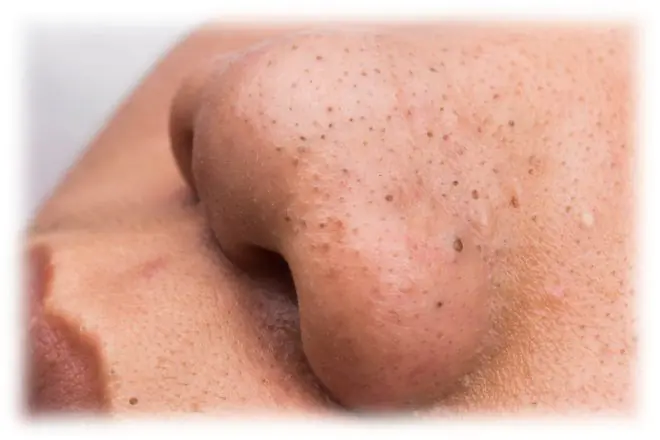
Home peels for skin prone to inflammation also have limitations. Peeling of problem areas is prohibited during periods of exacerbation of the herpes virus and the appearance of ulcers, in case of individual intolerance to the components of peeling compositions, in the presence of abrasions, burns or microcracks on the skin, as well as during pregnancy.
Preparing antiseptics at home
In order to save money on regular skin care treatments for problem skin, you can prepare a weekly peel at home. The components for natural peeling mixtures are within walking distance: acid solutions are sold without a prescription in pharmacies, fruits, cereals and dairy products are sold in supermarkets. Peels prepared by yourself, in addition to their affordable cost, have another important advantage. Such cleansing is not capable of causing harm to the skin and causing even greater inflammation.
To perform peeling, prepare:
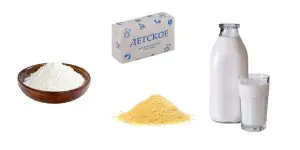
- 1 glass of milk with at least 2.5% fat content;
- 50 gr. gelatin;
- baking soda;
- laundry or baby soap without additives.
- Dissolve gelatin in milk in a ratio of 1 to 3;
- Heat the resulting mixture in a “water bath” until it has a jelly-like consistency;
- Steam the skin;
- Apply the peeling mixture to your face and wait until it dries completely;
- Carefully remove the formed film;
- Mix baking soda and soap foam in a separate container;
- Apply the resulting peeling product to the skin of the face;
- After 20 minutes, wash with warm water;
- Moisturize or disinfect the skin with a special cream or lotion.
For peeling you will need:
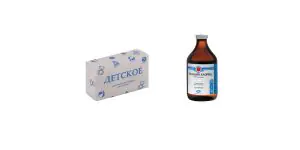
- 1 ampoule of calcium chloride solution;
- solid soap for babies.
- We carefully remove makeup;
- Using a cotton pad, wipe your face with a solution of calcium chloride;
- We wait about 3–5 minutes for the first layer to dry;
- Repeat application of the product 4–5 times, drying each new layer;
- We soap our fingertips with baby soap;
- Rub the soap solution into the skin of the face in a circular motion, moving along the massage lines;
- Carefully roll up the resulting particles;
- Wash with cool water;
- Apply moisturizing or nourishing cream to the skin.
Prepare a peeling product from simple ingredients:
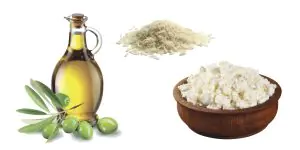
- 1 tsp. rice cereal;
- 2 tbsp. l. grain cottage cheese with at least 3.5 fat content;
- ½ tsp. olive oil.
- In a coffee grinder, grind the rice grains to a powder consistency;
- Mix rice powder with cottage cheese;
- Add olive oil to the resulting peeling mixture;
- Apply the resulting slurry to the skin;
- Leave on face for 15–20 minutes;
- Remove the remaining peeling mixture with warm water;
- Moisturize the skin with cream or mask.
To prepare the peeling product you will need:
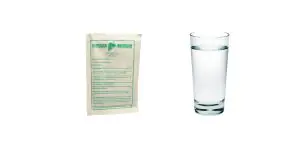
- ½ tbsp. l. bodyaga powder;
- ½ glass of clean water.
- We cleanse the face of remnants of cream and decorative cosmetics;
- Dilute bodyagi powder with water to the consistency of sour cream;
- Apply the resulting peeling mixture to the face;
- Leave to act for 10–15 minutes;
- Wash with cool water, blot your face with a paper napkin;
- Apply moisturizer.
Homemade peelings based on natural ingredients should become a must-have tool for caring for problem skin. Such peelings significantly save your budget and reduce the number of pimples or blackheads. However, when performing home peeling procedures, you need to be careful and carefully monitor so that the infection does not spread to the neck or décolleté. To do this, during peeling, maintain a sterile procedure, and on the eve of exfoliation, consult with a specialist about the ingredients of the composition that are suitable for you.
Beautiful, radiant, healthy skin is comparable to a diamond that constantly requires jewelry cutting. We are talking about peeling, because it has the power to make a global transformation - especially in the case of oily skin.
- What you need to know about peeling for oily skin
- Mechanism of action
- When to use
- How often can you exfoliate at home?
- What should be the result
- Types of peeling
- Choosing a peeling method for oily skin
- Peeling for problem skin at home
- Tools Overview
What you need to know about peeling for oily skin
For oily skin, peeling should be done regularly. © Getty Images
People with oily skin hardly need to explain what peeling is. Most of them have been accustomed to this procedure since youth: the difference between the facial skin before and after peeling is too obvious to neglect exfoliation.
Regular renewal is one of the main stages of caring for oily skin.
Mechanism of action
Peeling is not so much a means as a process through which agents (acids, enzymes, ultrasound) act on the connections between the cells of the stratum corneum (destroying them) and on the cells themselves, starting the renewal process. This explains the “peeling” of the skin after peeling.
Cosmetologists consider light chemical peeling to be the most physiological for the skin. What are its advantages?
Helps cleanse the skin.
It is gentle on fabrics and suitable even for sensitive, oily skin.
Helps get rid of problems typical of oily skin.
Removes dead cells.
Eliminates dullness and gives skin radiance.
Provides a massage (when scrubbing, rinsing or spreading gels or lotions) that improves microcirculation.
When to use
For oily skin, peeling can be useful if you are concerned about:
acne and comedones;
dull complexion.
How often can you exfoliate at home?
When choosing a peel and the frequency of its use, much depends on the initial condition of the skin. For example, for acne, it is recommended to resort to peeling regularly.
The frequency of peeling depends on your skin type, © Getty Images
There are daily acid-based peeling lotions. Such products are applied to the face with a cotton pad as a tonic, but mainly only in the evening (since they increase the photosensitivity of the skin).
With very dense epidermis and rough, porous skin, exfoliation can be done more often than usual. But this recommendation should be given by a specialist who will assess the density of the skin and the thickness of the stratum corneum instrumentally, and not by eye.
What should be the result
After peeling (mechanical or chemical), the skin literally glows: a healthy glow, fresh color, unnoticeable pores. This is how it should be, because the epidermis is smoothed out and reflects light better, peeling disappears, defects are smoothed out, including post-acne marks.
Types of peeling
When choosing peeling for oily skin types, you should not rely on the advice of friends; it is better to make an appointment with a dermatologist. After a detailed examination of the skin, the doctor will decide what kind of peeling you need.
Superficial exfoliation is the simplest and easiest salon way to get rid of dead cells. Typically, glycolic acid is used in a small concentration for such peeling.
The course consists of 4–8 procedures with an interval of 7–10 days.
After about six months (and even earlier for very thick skin), it can be repeated.
This peeling is considered more effective. But it is carried out less often than superficial, due to the fact that during traumatization of the skin several layers of it are “removed” at once. As you understand, medium peeling is done only (!) in a cosmetologist’s office. The active substances that are included in the compositions for such peeling are the same as those used for superficial peeling, but in a higher concentration.
Typically, medium peeling is performed no more often than once every six months.
For very sensitive skin, a cosmetologist may recommend limiting yourself to one procedure per year.
This intervention is very aggressive, it is performed extremely rarely, and only in the clinic and only under anesthesia. The doctor gives the referral.
Choosing a peeling method for oily skin
Types of peeling differ in their mechanism of action.
It is better if your doctor decides which type of peeling is right for you. © Getty Images
Scrub, exfoliator, exfoliating cream and lotion are not a complete list of products for mechanical peeling. Frequency of use - no more than 3 times a week.
Peeling creams, lotions and scrubs containing acids - salicylic, glycolic, LHA - are suitable for oily skin.
One of the most effective types of hardware peeling is dermabrasion. Microparticles are sprayed onto the skin under pressure to exfoliate dead cells. As a result, the skin receives a powerful impulse for renewal.
“The best time for any peeling, in particular for oily skin, is autumn and early spring, when it is still quite cloudy and the air temperature is around zero.”
Peeling for problem skin at home
You don't need anything special to exfoliate at home. Just follow the rules.
Cleanse your skin thoroughly: remove makeup, then wash your face. Apply the peeling composition to damp skin for a few minutes, then rinse with warm water. To soothe irritated skin, it is recommended to make a compress based on thermal water.
Unless we are talking about a night peeling product that does not require rinsing, it is recommended to lightly massage the skin in a circular motion while applying the product, avoiding the area around the eyes.
Cleanse your skin twice a day with gentle cleansers.
Avoid exposure to ultraviolet light.
Use cream with SPF.
For daily care, use delicate creams for sensitive skin.
Tools Overview
Acid and quinoa husk extract in the composition promote skin renewal. More about the product
AHA and BHA acids control skin oiliness. Directions for use: After toner, apply 4-5 drops of the product to the skin of the face and décolleté. More about the product
A complex of glycolic acid, black tea and blueberry extracts evens out skin tone. More about the product
Formulated with pineapple extract, papain and apricot kernel powder to help remove dead skin cells. More about the product
The main goal of the product is to free the skin from dead particles, give it radiance and freshness. More about the product



